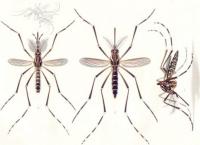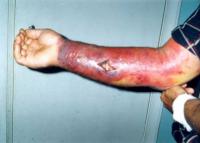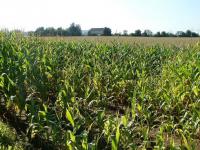-
Rapid detection of E. coli in water
Tragedies like the E. coli outbreak in Ontario’s Walkerton in May 2000 could be averted today with a new invention by researchers at York University that can detect the deadly contaminant in drinking water early. Anew technology has cut down the time taken to detect E. coli from a few days to just a couple of hours.
-
-
Biodefense Panel welcomes key provision in defense authorization bill
In October 2015, the Blue Ribbon Study Panel on Biodefense found that insufficient federal coordination on strategy, budgeting, and policy; inadequate collaboration with other levels of government and the private sector; and lagging innovation in areas like biosurveillance and medical countermeasure development make the United States vulnerable to biological attacks and infectious disease outbreaks. The Panel welcomed the passing by the House of the National Defense Authorization Act, H.R. 4909, which includes a provision addressing one of the Panel’s most important recommendations.
-
-
A tool to help public health decisions on Zika virus to be cost-effective

A new study presents a cost-effectiveness tool that can help guide decisions regarding resource allocation to fund interventions targeted at curtailing the ongoing Zika virus outbreak. Analyses using the tool suggest that proposed funds to combat Zika in the United States and other countries would be cost-effective, based on quantification of the serious health conditions associated with Zika infection.
-
-
Bolstering international response capabilities to infectious disease threats
To make the world safer against future infectious disease threats, national health systems should be strengthened, the World Health Organization’s emergency and outbreak response activities should be consolidated and bolstered, and research and development should be enhanced, experts say
-
-
How will the next leader of WHO tackle future health emergencies?
In light of heavy criticism of the World Health Organization’s handling of the Ebola outbreak, the election process for the next director general will be under intense scrutiny. Experts outline the key questions on epidemic preparedness for prospective candidates.
-
-
House temporarily halts sale of Plum Island
New York and Connecticut lawmakers who have been campaigning against the sale of Plum Island by the federal government, have won an impressive victory as the U.S. House of Representatives voted unanimously on Monday to halt efforts to sell the property, at least temporarily. Plum Island, located of the north-eastern tip of Long Island, has for decades housed a high-security biolab in which research into deadly animal diseases pathogens. The aging lab is closing, and its operations will be moved to a modern high-security lab being built in the campus of Kansas State University.
-
-
Senate approves $1.1 billion to fight Zika virus
The Senate on Tuesday voted 68-29 to allocate $1.1 billion in emergency funding to fight the Zia virus threat. The funds fall short of the White House’s request of $1.9 billion, but are significantly more than House Republicans’ $622 million anti-Zika proposal. The House will debate the measure on Wednesday.
-
-
Maryland identifies health vulnerabilities resulting from climate change
As world leaders convened in Washington, D.C. a couple of weeks ago for the Climate Action 2016 summit, a new report by Maryland public health leaders details the impacts of climate change on the health of Marylanders now and in the future. The report examines the relationship between exposure to extreme weather events and risk of selected health outcomes including food and waterborne illnesses, hospitalization for heart attacks and asthma, and motor vehicle accidents.
-
-
NSF awards $1.7 million in rapid response grants to study Zika virus
Zika, discovered in Uganda in 1947, has been documented since the 1950s along the equatorial belt from Africa to Asia. In 2014, the virus spread eastward to French Polynesia, and in 2015 to Mexico, Central America, the Caribbean (including Puerto Rico) and South America, where the outbreak continues. To find new ways of halting the spread of Zika — fast becoming a major public health threat — the National Science Foundation (NSF) Division of Environmental Biology’s Ecology and Evolution of Infectious Diseases (EEID) Program has funded nine rapid response, or RAPID, grants totaling $1.7 million.
-
-
A new paper-based test for the Zika virus
A new paper-based test developed at MIT and other institutions can diagnose Zika virus infection within a few hours. The test, which distinguishes Zika from the very similar dengue virus, can be stored at room temperature and read with a simple electronic reader, making it potentially practical for widespread use.
-
-
Israeli tech ready to take on Zika-carrying mosquito
The mosquito-borne Zika virus, according to new reports, is even more dangerous than first believed. While better information about prevention has helped slow the rate of infection in some areas, the health community is still urgently searching for a vaccine or drug treatment. The world seeks a medical intervention, but Biofeed’s no-spray green product targets the insects directly.
-
-
Developing new anthrax vaccine

The Texas A&M Center for Innovation in Advanced Development and Manufacturing (CIADM) will produce an intranasal anthrax vaccine candidate under a task order issued by the U.S. Department of Health and Human Services (HHS). This is the first task order issued to the Texas A&M center and will enhance protection from anthrax disease. The Texas A&M facility is one of three CIADMs — and the only academically-based center — established as public-private partnerships with BARDA in 2012 to enhance the nation’s emergency preparedness against emerging infectious diseases.
-
-
Growing demand for bioenergy threatens global food supply

As countries around the world look for ways to reduce their use of fossil fuels, the growing demand for bioenergy runs the risk of threatening the global food supply. Researchers have developed a certification scheme for biomass resources designed to incorporate food security, to help ensure people in affected regions of the world can continue to put food on their tables.
-
-
Yellow fever epidemic threatens new global health emergency
Evidence is mounting that the current outbreak of yellow fever is becoming the latest global health emergency, two experts say, calling on the World Health Organization (WHO) to convene an emergency committee under the International Health Regulations. In addition, with frequent emerging epidemics, they call for the creation of a “standing emergency committee” to be prepared for future health emergencies. The add that vaccine “supply shortages could spark a health security crisis.”
-
-
The long history of lead poisoning in the U.S.
While state and federal officials continue to criticize each other for failing to guarantee safe drinking water, the question of exactly who is responsible for crises like in Flint, Michigan, lies at the root of the problem. “The crisis in Flint brought the true costs of a neglected infrastructure to the nation’s attention, but in the finger-pointing there are deeper debates over public and private responsibility and the impact of dysfunctional politics on public health,” says one expert.
-
More headlines
The long view
Ransomware Attacks: Death Threats, Endangered Patients and Millions of Dollars in Damages
A ransomware attack on Change Healthcare, a company that processes 15 billion health care transactions annually and deals with 1 in 3 patient records in the United States, is continuing to cause massive disruptions nearly three weeks later. The incident, which started on February 21, has been called the “most significant cyberattack on the U.S. health care system” by the American Hospital Association. It is just the latest example of an increasing trend.
